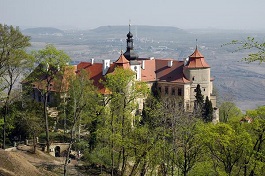
The Jezeří Castle is among the seven most endangered monuments in Europe
 |
The program for the Seven Most Endangered Monuments in Europe aims to draw public and private attention to these monuments, strive for their preservation, and ensure a sustainable future for them.
"Extensive coal mining in the Most region devastated the landscape and the castle itself; when we took over the management of the building in the mid-90s, it was in a state of emergency," said Naďa Goryczková, General Director of the National Heritage Institute. Today, the castle has new roofs, trusses, chimneys, and ceilings, and the theater hall is being restored. The castle has been included in the National Investment Plan. However, according to the National Heritage Institute, the endangered monuments program helps attract other investors, through whom the planned restoration could be accelerated.
Nominations for the list of endangered monuments were submitted by civil society entities and public administration bodies. The nomination of Jezeří Castle was submitted by the Association of Castle and Chateau Owners with the support of the building's manager, the National Heritage Institute. The seven most endangered monuments were selected by the board of the Europa Nostra association. Among those on the list is, for example, a government building in Oslo, which was damaged by terrorists during an attack in 2011 and was slated for demolition, a fortress in Belgrade threatened by a cable car construction project, and the Tuscan castle of Sammezzano in Italy with its lavish 19th-century decorations. In addition to these, the list includes the National Albanian Theatre in Tirana, the Szombierki power plant in Bytom, Poland, and Plečnik's stadium in Ljubljana, Slovenia.
In the past, the placement on the list of the seven most endangered monuments in Europe helped save, for example, the synagogue in Subotica, Serbia. The synagogue, built in 1902, is one of the significant buildings constructed in the Art Nouveau style with elements of Hungarian folk art.
Europa Nostra is an organization involved in the protection and promotion of European cultural and natural heritage. The pan-European association of non-governmental organizations, supported by a wide network of public groups, private companies, and individuals, includes more than 40 countries. Europa Nostra was founded in 1963.
The English translation is powered by AI tool. Switch to Czech to view the original text source.
0 comments
add comment









